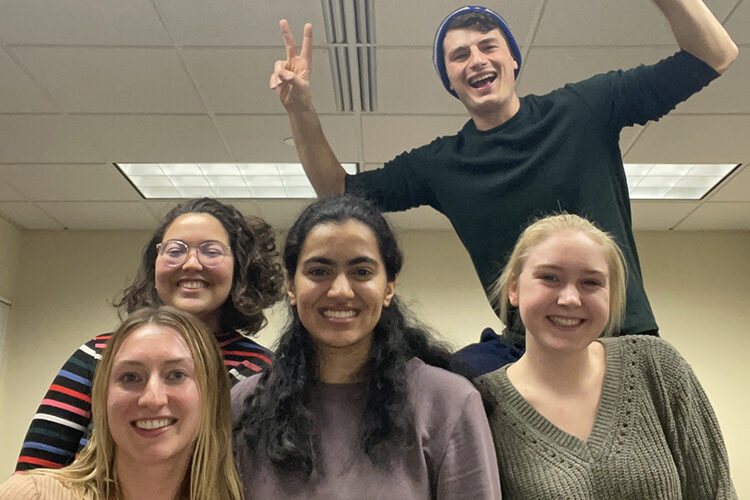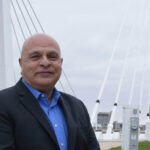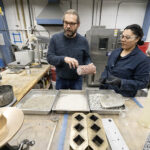A team of students from the University of Wisconsin-Milwaukee recently won first place in a national competition to come up with inexpensive and practical solutions to improving drinking water in remote areas.
The competition, Spark, was created to develop solutions to actual industry challenges that have global impact. Put on by the Ramboll company, the competition poses problems faced by real-world organizations and asks students to come up with solutions.
UWM’s team, which included students from environmental, mechanical and biomedical engineering, finished in first place – ahead of teams from major universities such as Purdue and the University of Pennsylvania.
Members of UWM’s team were Halah Idrissi, Zach McFarland, Tessa Parrish, Kaveri Salunke and Melissa Schussman. Jennie Klumpp, senior advisor at the College of Engineering & Applied Science, and Hector Bravo, professor emeritus of civil and environmental engineering, recruited the team.
Improving the process
For this year’s challenge, Ramboll partnered with AguaClara, a nonprofit that aims to bring clean and safe drinking water to communities in need around the world. The company already has a water treatment process that is low cost, requires little to no electricity, uses entry level maintenance workers and meets clean water standards. However, the process currently releases the residue back into the water basin. The challenge was to design a better way to dispose of this resulting sludge.
“It is important work because the amount of people in the world who don’t have running water in house is staggering,” said McFarland, a senior in mechanical engineering. He also works with Engineers Without Borders, so he was familiar with the need for clean water in many areas of the world. “I believe everybody should have access to clean drinking water in their homes, and reducing the cost of these systems is a big part of making this a feasible goal.”
Schussman, an environmental engineering graduate student who is doing wastewater-based epidemiology research, said the challenge was also a good fit with her research.
“Hector Bravo is on my (thesis) committee and encouraged me to look into this competition since I have an interest in water treatment and work so closely with sludge.”
“I was interested in participating because there are not very many opportunities such as internships in the biomedical engineering field, said junior Kaveri Salunke. “I was hoping to gain some engineering experience and I thought this was a good challenge that allowed us to use the skills and knowledge we have learned so far.”
A quick solution
The team had less than a month to come up with a design. “It was definitely a challenge to come up with a solution in three weeks,” said Parrish, a senior in biomedical engineering and president of the UWM chapter of the Society of Women Engineers.
The team members gathered at the Kulwicki Garage in the engineering building, with some members calling in via videoconference. After several attempts, they came up with the design that they submitted to the competition.
“Once we got to this point, we had about two days to really dive into the design and get our presentation together,” McFarland said. “We buckled down and put out something that we’re all proud of.”
Their solution used a mechanical system to “dewater” the sludge through agitation and compression chambers to create a “wet cake” that could be used for composting. Their presentation video shows the details.
Valuable experience
It was a compact, gravity-based design that didn’t harm the environment and was extremely cost effective to run long term.
“Figuring out a way to repurpose wastewater is a very real engineering problem,” said Idrissi, a junior in mechanical engineering. “Even if we hadn’t won, I still would have found the experience of learning about an issue I know very little about and designing a solution for it very valuable.”
The students really took advantage of all the sessions they were offered with engineers from AguaClara and Ramboll, she added. “I noticed that UWM was one of the only ones that made use of all our allotted spots to get feedback on our design. Listening to the engineers ask questions we hadn’t necessarily considered helped us immensely when we finally put everything together.”
The first place honor comes with $3,000 award and a real sense of accomplishment.
Said Schussman: “It was quite difficult to come up with our design in the three-week time frame because we are all such involved, and busy students. Many of us were juggling multiple jobs and curricular activities, so it was great to be rewarded for all of our hard work on top of our busy schedules.”






